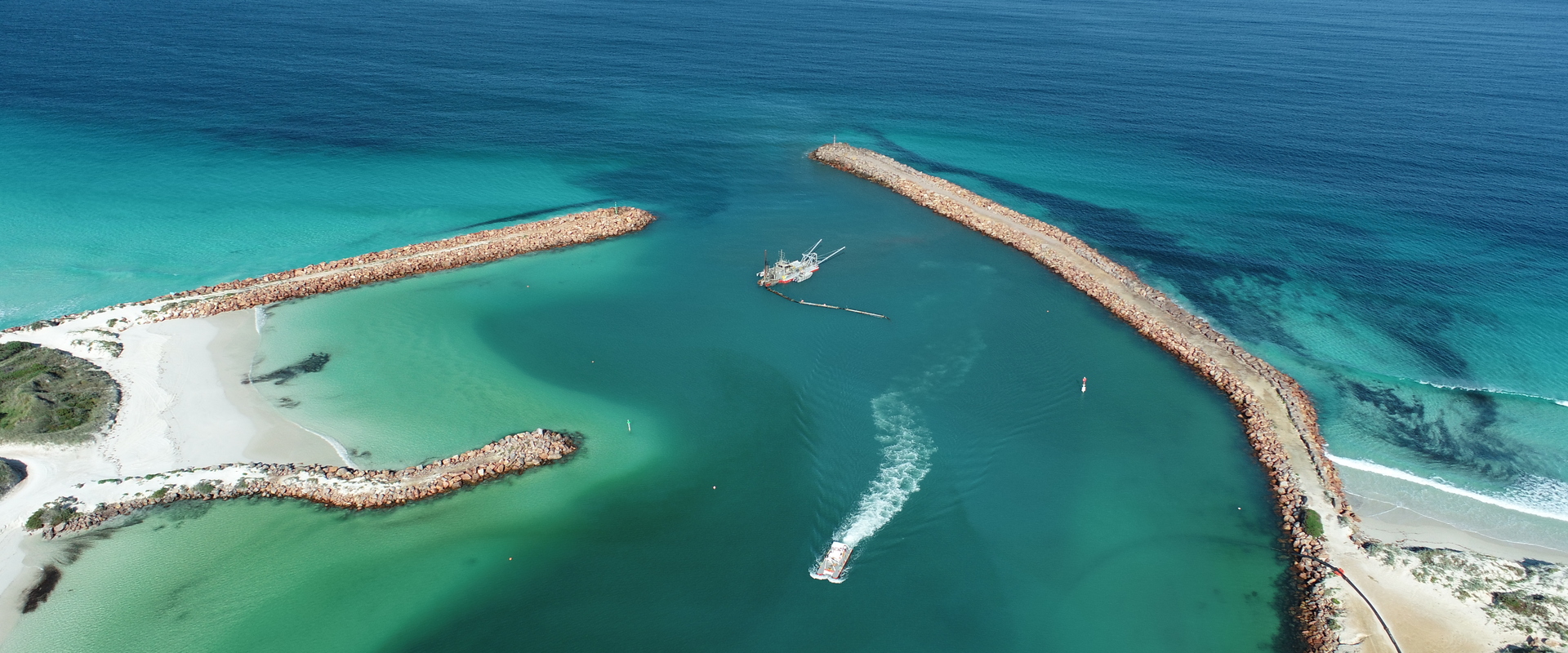The Bandy Creek Maintenance Dredging and Castletown Beach Nourishment Project was a collaborative initiative aimed at enhancing coastal resilience in the Esperance region of Western Australia. Nominated under the Coastal Adaptation category, the project effectively combined essential maintenance dredging with strategic beach nourishment to manage coastal hazards such as erosion and inundation. By partnering with the Department of Transport and Major Infrastructure (DTMI), Shire of Esperance (SoE), BMT, and Maritime Constructions (MC), the project successfully addressed the dual challenges of maintaining safe navigation and improving shoreline protection.
Requirements
The project was driven by the need for:
- Routine maintenance dredging at Bandy Creek Boat Harbour, which is undertaken biennially by DTMI.
- Reuse of dredged material to nourish Castletown Beach, a coastal hotspot facing significant seasonal erosion.
- Enhanced public amenity at Castletown Beach, located approximately 3.8km from Bandy Creek.
- Protection of sensitive seagrass habitats during dredging activities.
Solution
The solution involved an integrated coastal resilience approach, combining essential maintenance dredging with strategic beach nourishment:
- Integrated coastal resilience approach: Dredging material from Bandy Creek was repurposed for beach nourishment at Castletown Beach, simultaneously improving shoreline protection and maintaining safe navigation conditions.
- Sustainable sediment management: The dredged material was reused in a circular manner, preventing unnecessary environmental disturbance and reducing long-term ecological impact by keeping sediment within the coastal system.
- Environmental management and monitoring: Surveys informed adaptive management practices, protecting sensitive seagrass areas from the dredging activities through careful monitoring and management.
- Collaborative and community-focused delivery: The project exemplified strong collaboration between the DTMI, SoE, BMT, and MC, with a focus on community engagement, managing expectations, and delivering visible improvements to public access and coastal amenity.
This project successfully demonstrated how a combined effort in coastal dredging and nourishment could provide multiple benefits, from enhancing the resilience of the shoreline to contributing to sustainable environmental practices.


